Sheep farming is deep within our nation’s psyche. The phrase ‘riding on the sheep’s back’ was coined in the 1950s for a good reason, and a Merino is enshrined on our now defunct $2 note. But the industry’s history isn’t stopping – it is making massive leaps forward with new technologies and methods that are reaping some big rewards.
Roseville Park Merino Stud, 40km south of Dubbo, runs up to 10,000 Merinos and Poll Merinos across a number of properties spanning a total of 3,240 hectares – and is breaking new ground with innovations that are aiding growth, including exporting genetics and twice-yearly shearing.
One of the first studs to export pure Merino genetics in the early 1990s, its client base now stretches to the far corners of the globe, delivering to more than 10 countries. About 3,000 straws of semen are sold annually, of which 50% are shipped internationally.
Owner Matthew Coddington, a fifth-generation sheep farmer, and his wife Cherie, continue to cultivate the stud’s global footprint, which involves a lot of groundwork. “It’s hard to concentrate on any one place,” Matthew admits.
However, his balanced approach to breeding is helping to maximise versatility and strengthen the stud’s market access. He says product demand is increasing, particularly with Argentinean customers, who are mostly “industrial companies buying up large farms that are willing to pay $20,000 for a ewe that will win the big ribbon at the show”.
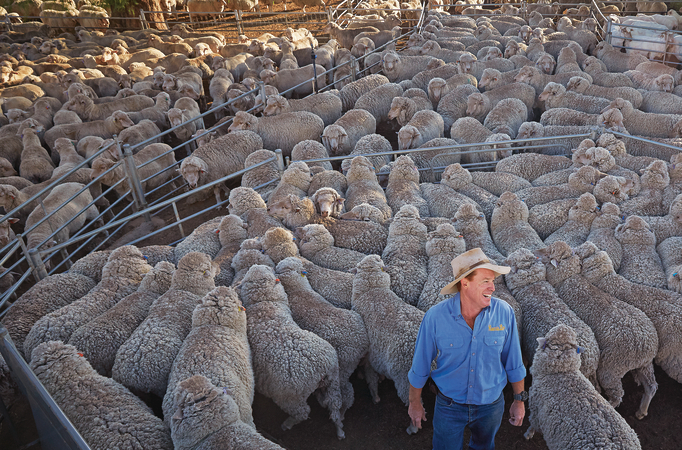 Matthew surrounded by his ewes, penned and ready to have their fleece shorn.
Matthew surrounded by his ewes, penned and ready to have their fleece shorn.
Roseville Park genetics now influence more than 70% of Uruguay’s Merino flock, Matthew says, with new-found interest stemming from the Philippines, India, Romania and Europe. Other countries including Russia, the United States, China, Mexico and South Africa also use the stud’s prized rams.
Steering such a successful and innovative enterprise, it is no surprise that Matthew runs a tight ship with everything calculated to the last degree. “Perfection is achieved when there is nothing more to add,” he says.
SHEARING PRACTICES ARE SHIFTING
One of his significant decisions has been to shift shearing operations from annually to twice a year, defying the norm. He made the move in 2016, switching Roseville Park from traditional 12-month shearing to a seven- and five-month rotation, sure the investment would be worth it. And he was soon proved right. Despite a few furrowed brows, it was a smart business decision that’s transformed the stud’s operation for the long term and increased labour efficiencies.
The extra shearing costs of $30,000 a year for 5,000 breeding ewes have been offset by reduced needs for Clik (sheep blowfly spray) throughout the summer, better condition scores – meaning less feeding costs – a 10% increase in clean wool, and a deduction in crutching costs, among many other benefits.
The seven- and five-month shearing rotation enables faster turn-off from paddocks, which is helping enhance wool specifications and improve and maintain the flock’s annual condition score to a three, all year round.
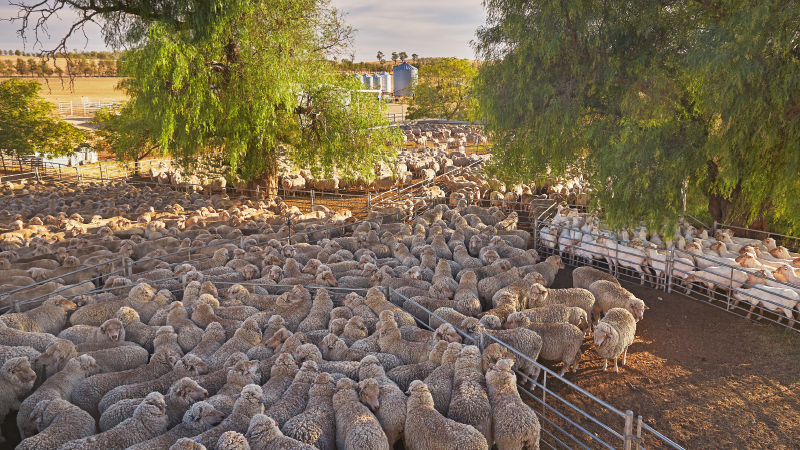
The innovative shearing rotation complemented new pasture management principles Matthew began introducing in 2013. In the 2013/14 season, the Coddingtons banked an extra eight tonnes of wool (42 bales) and have since consistently gained an extra 10% of lambs off the same amount of ewes. Matthew says they’re producing bales of wool, which on average weigh 190kg and sell for $2,670.
By shearing in early spring before the grass seed drops, the sheep are carrying less burs, seeds and dust, which collectively reduce the quality of the fleece and weigh down the sheep, adding stress to the animal. Cutting the fleece load from up to 10kg to 4kg has made the world of difference to the flock’s condition score, Matthew says, and helped increase fertility rates, reaching 140% in spring and 117% in autumn.
Roseville Park has achieved an average cut of 8.3kg – an average fleece increase of 1kg – over the past three seasons, with a “neat” average micron of 18.0 and length of 65mm on average, with a high staple strength – an increase of 10 Newtons per kilotex – and a 2% decrease in vegetable matter.
Matthew says: “The 2015/2016 season was a stand-out year with a whopping 46 inches [1,168mm] of rain, recording an average 8.8kg fleece, along with 2016/2017 recording an average of 8.3kg (with a 4.1kg and 4.2kg cut), but 2017/2018 has been historically our worst drought, averaging 7.8kg.
“So it certainly hasn’t been plain sailing with these fluctuations in seasons altering our [fleece] yield, but on average there’s been significant gains,” Matt says.
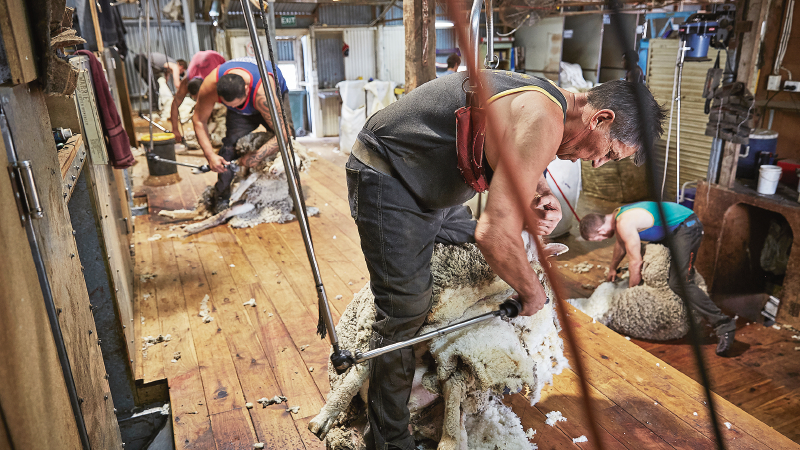 One of Roseville Park’s shearing sheds where Charles Sciascia and fellow shearers work hard.
One of Roseville Park’s shearing sheds where Charles Sciascia and fellow shearers work hard.
LIVESTOCK SELECTION PROCESS
Matthew believes the stud’s business success comes down to strategic management principles and keeping an open mind. “We’re very visual in our selection process, but we’re not aligned to any one breeding philosophy. We’re balanced in our approach,” he says.
This approach has driven the development of Roseville Park’s genetic profile, bolstered by Matthew’s meticulous nature that sees him measuring everything to ensure the business and their sheep are running at the top of their game.
“You have to measure everything: the feed on offer, your costs and your stocking rates,” he says. “If you don’t measure it, you can’t manage it,” Matthew says.
TAKE THE GUESSWORK OUT OF SHEEP SELECTION
Australian Sheep Breeding Values help project how an animal’s progeny will perform for a range of traits, including:
- birth/lamb weight
- body weight
- genetic fat depth
- eye muscle depth
- fleece weight
- reproduction
- staple strength
- worm resistance
The underlying physicality – frame, structure and wool, are stand-out characteristics for Matthew. “But prime-performing sires are based more on traits, using
Australian Sheep Breeding Values [ASBVs], an estimate of an animal’s true breeding value based on pedigree and performance recorded information,” he says (see the box on page 41 for more details).
“We can’t see 80% of the most important traits, like the reproduction rates, mothering performance, fat, muscle and internal parasite resistance that are all key traits leading to a profitable Merino enterprise.”
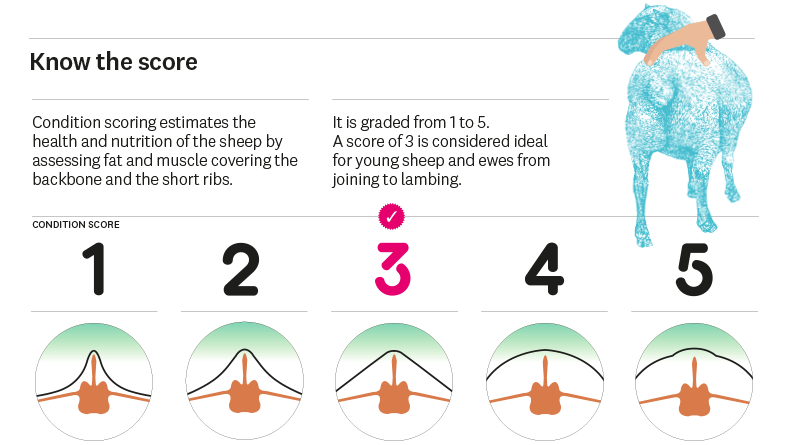 Take the guesswork out of sheep selection by assessing fat and muscle of the animal. (Source: Department of Primary Industries)
Take the guesswork out of sheep selection by assessing fat and muscle of the animal. (Source: Department of Primary Industries)
DO MORE FOR YOUR BUSINESS WITH LESS
“Overheads are always rising,” says Matthew, so as a way to increase the business’ turnover, he has focused on producing more with less, consequently increasing the dry sheep equivalent, up to 22,000 (production per hectare) and doing so without supplementing.
Even though Matthew’s bread and butter – 85% of Roseville Park’s income – comes from the Merino stud, based on prime genetics, he truly believes investing in genetics is only worthwhile if paired with good stock management.
“There is no point paying extra money for high performance genetics if they are not going to be managed well,” he says.
“In some cases it may be the best option to pay less for an average-performing ram to achieve the same outcome, if your environment can’t allow your sheep to fully express their genetic potential.”
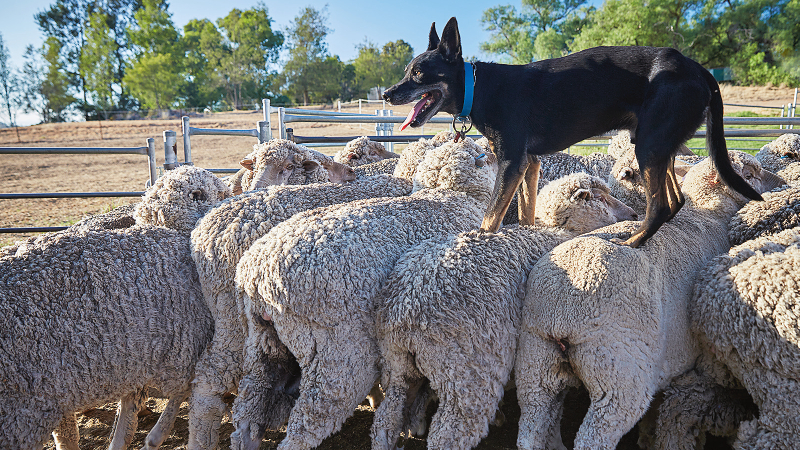 Penning up with the help of keen sheepdog Bob
Penning up with the help of keen sheepdog Bob
THE GENETICS GAME
Matthew’s management principle is essentially underpinned by genomics, which have enabled quantum leaps forward in their genetic selection. Once markers for traits have been identified, then selection can be made, based on results of DNA testing very early in an animal’s life.
Roseville Park has employed a variety of technologies and strategies over the years to explore the genetic potential. This includes artificial insemination (AI), embryo transfer and shortening intergenerational gaps to speed up the rate of genetic gain, by using 30 rams aged seven months old to service most of the ewes in the insemination flocks.
On average Roseville Park sells 650 rams a year, selecting three top sires to breed from. “We only incorporate a few sires into the system – they have to be able to withstand a lot of rain, fleece rot, dermatitis, flies, worm resistance and have the ability to cut a lot of wool,” Matthew says. It’s a tough class to meet, when the bar is set so high.
Matthew’s hunger for knowledge and business sense led him to learn to do laparoscopic AI in 1996. By carrying out the AI procedures, he has lowered on-farm vet costs from $20 per sheep to $7. Since then he has integrated an annual AI program for up to 3,000 breeding ewes, which takes over seven days using their top 10 rams.
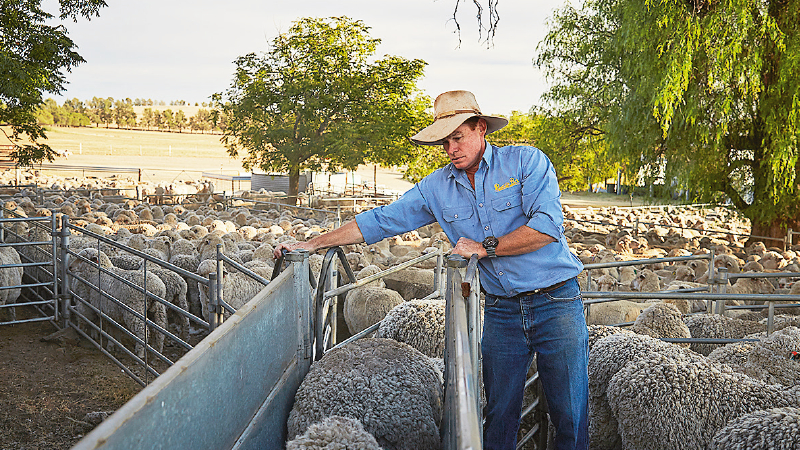 Matthew drafts ewes for the March shearing rotation
Matthew drafts ewes for the March shearing rotation
FUTURE INVESTMENT IN THE WOOL INDUSTRY
Matthew is confident about the future of Australia’s sheep and wool industry and invests considerable amounts of time and energy sharing his knowledge with clients, running workshops and education days on sheep breeding and selection across NSW, and working closely with
Australian Wool Innovation and the
Department of Primary Industries.
He says it’s the beauty of the moment – with the Australian wool flock at 70 million head, compared to the peak of 173 million in 1980, and demand for wool increasing. “We’re 10 years on from the GFC, so there’s a lot of affluent customers overseas and pretty bleak cold winters in European countries, so naturally the demand is outstripping supply,” he says.
In order to support their double-cut shearing and keep up with demand, the Coddingtons have invested in significant infrastructure upgrades, confirming their commitment to the wool industry.
They have built two shearing sheds in the past two years, designed with “front-filled sloped floor catchpens” to help streamline the flow of the sheep.
“We’ve incorporated a new flooring system, with a tough deck made of recycled plastic that’s very low maintenance,” Matthew says. “The upgrade is working really well and helping to keep the sheep calm throughout the shed, because they can’t see the light outside.”
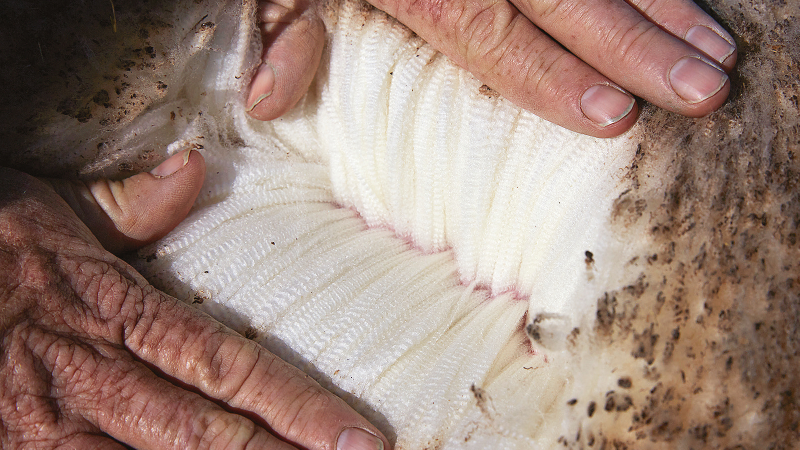 Cleaner wool is achieved by shearing twice a year.
Cleaner wool is achieved by shearing twice a year.
THE ROAD TO SUCCESSFUL BUSINESS
In 2005, Matthew and Cherie Coddington bought Roseville Park Merino Stud, a fifth-generation sheep stud established in 1938, from Matthew’s parents. The couple now own four farms, and lease a further one nearby, to run the stud’s operations.
They have five children, Savannah, 20, Tessa, 18, Charlie, 17, Amelia, 15, and Timothy, eight. Cherie says the children have always helped out with shearing when they’re at home and have been involved in showing sheep from a young age.
In the future, some of them may well become part of the business, learning as their father does by getting involved in industry workshops and events.
Roseville Park consists of granite, clay, sand, and loamy soils with 80% natural pastures, 20% improved lucerne clover and 400 hectares of cropping. Matthew explains that 85% of Roseville Park’s income is made from the sheep enterprise, coupled with the sale of surplus stock, fat lambs and trade cattle.
“Having a strong foundation increases the value of everything you do,” Matthew says, adding that it’s the catalyst for future development. And with any enterprise, he says, spreading your income and diversifying are vital.
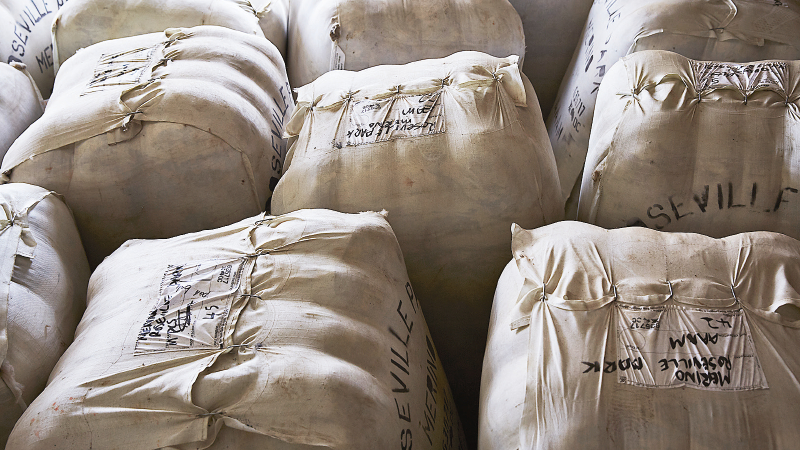 Increased fleece yield means heavier bales of hay.
Increased fleece yield means heavier bales of hay.